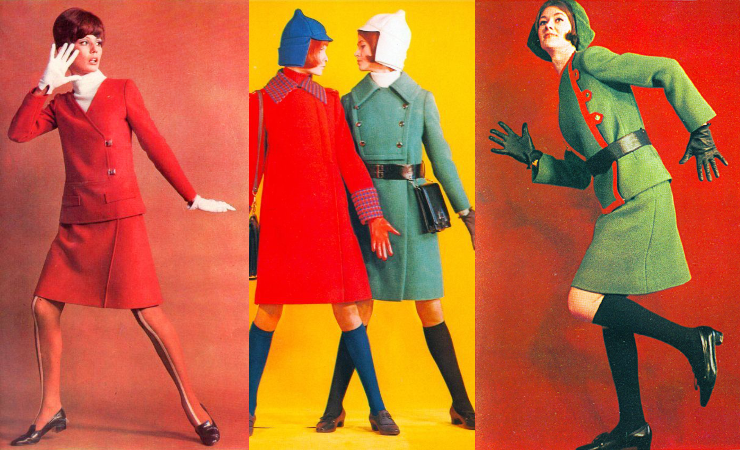
The Soviet Union, a state governed by a mix of ideology, patriotism, and collective effort, was not typically associated with high fashion or individuality. Yet, amid the austere and utilitarian style that dominated, a distinctive fashion culture emerged, particularly among the youth. Known as “Komsomol Chic,” this fashion movement embodied the spirit of Soviet youth through a unique combination of socialist ideals and Western influences.
The Rise of Komsomol Chic
The Komsomol, or All-Union Leninist Young Communist League, was a pivotal institution in the Soviet Union, designed to instill loyalty to the party and promote the values of socialism. Young members of this organization were often seen as the vanguard of the Soviet system—energetic, passionate, and full of potential for the country’s future. By the 1960s and 1970s, the Komsomol had become a significant part of the Soviet cultural landscape, and with it came the rise of a youth-driven fashion revolution that would come to be known as “Komsomol Chic.”
This style was deeply intertwined with the social and political currents of the time. While the government preached uniformity, youth fashion in the USSR began to showcase creativity and self-expression, albeit within the confines of the communist regime. The influence of Western pop culture, especially the music and styles of the 1960s, began seeping into Soviet youth fashion despite strict state control and limited access to foreign goods.
The Key Elements of Komsomol Chic
Modesty Meets Rebellion
At its core, Komsomol Chic was a hybrid of conformity and rebellion. The Soviet authorities were wary of the effects of Western culture, which they saw as decadent. Young Soviet citizens, however, were eager to explore these influences while still adhering to the basic tenets of Soviet ideology. The result was a fashion movement that subtly challenged authority without being overtly defiant.
The Influence of Western Fashion
The 1960s and 1970s were years of massive cultural exchange between the Soviet Union and the West. Although access to Western goods was limited, youth in major cities like Moscow, Leningrad, and Kyiv were able to catch glimpses of Western pop culture through smuggled magazines, films, and the music of bands like The Beatles and The Rolling Stones. This led to a more eclectic style that fused Soviet utilitarianism with Western glamor.
Uniformity with a Twist
Soviet youth uniforms were designed to reflect the collective ideals of the USSR. However, youth started modifying these uniforms to express individuality. For example, the standard Komsomol uniform—a simple white shirt and dark trousers—was accessorized with brightly colored scarves or even Western-style leather jackets. By adding personalized elements to their attire, young Soviets were able to subtly express their personal tastes.
The Influence of Denim
One of the most iconic symbols of Komsomol Chic was denim. As a symbol of Western culture, denim was strictly controlled, but that didn’t stop young Soviets from finding ways to incorporate it into their wardrobes. Whether it was through jeans, denim jackets, or skirts, denim became a coveted item and a silent act of rebellion against the regime’s restriction of Western influences.
Soviet Youth Subcultures
Within Komsomol Chic, a number of youth subcultures emerged, each with their own take on fashion. The “stilyagi,” for instance, were known for their love of Western jazz, American fashion, and colorful, eccentric clothing. They would wear wide lapels, brightly colored ties, and shoes with a noticeable sheen. Their style was in stark contrast to the austerity of the Soviet state, making them stand out as avant-garde fashionistas of their time.
Beauty and Health
Another important aspect of Komsomol Chic was the emphasis on health and physical fitness, which was encouraged by the state. Youth organizations, such as the Komsomol, promoted physical activity and a healthy lifestyle. This was reflected in the activewear styles of the youth, which often included practical yet stylish tracksuits, sneakers, and accessories that were both functional and fashionable.
The Enduring Influence of Komsomol Chic
Despite the fall of the Soviet Union in 1991, the influence of Komsomol Chic continues to resonate in modern Russian fashion. Today, some designers have tapped into this nostalgia, mixing Soviet and post-Soviet themes with modern streetwear styles. Komsomol Chic, with its blend of rebellion, individuality, and state-imposed conformity, has become an emblem of the struggle for self-expression in a world defined by ideological constraints.
Modern Russian fashion has embraced the irony of Komsomol Chic, drawing on the aesthetics of the Soviet era to comment on today’s society. Streetwear brands and contemporary Russian designers often evoke the simplicity of Soviet-era clothing, paired with more modern, international influences, creating a hybrid style that reflects both the past and present.
Komsomol Chic stands as a fascinating intersection of fashion, politics, and youth culture in the Soviet Union. What began as a subtle form of resistance to the rigid structures of Soviet society has evolved into a celebrated piece of fashion history. The youth of the USSR, constrained by the state yet driven by their own desire for expression, forged a fashion movement that remains influential today. From the understated elegance of Soviet uniforms to the bold flair of denim jackets, Komsomol Chic embodies a unique narrative of fashion as a form of quiet rebellion.
The post Komsomol Chic: Youth Fashion in the USSR appeared first on The Fashiongton Post.
